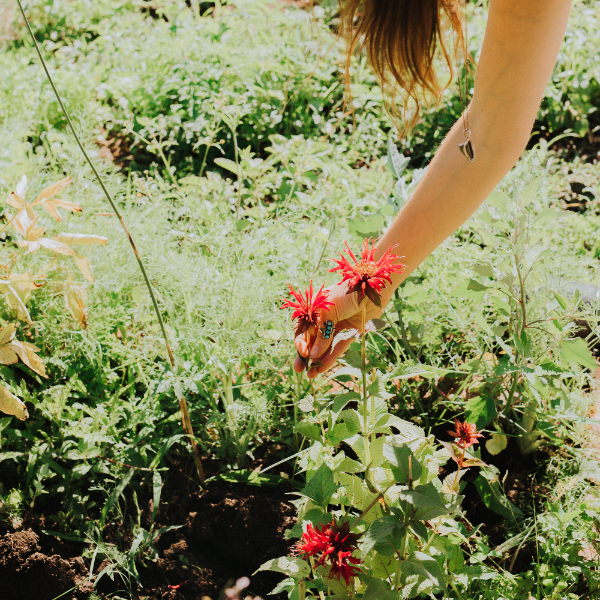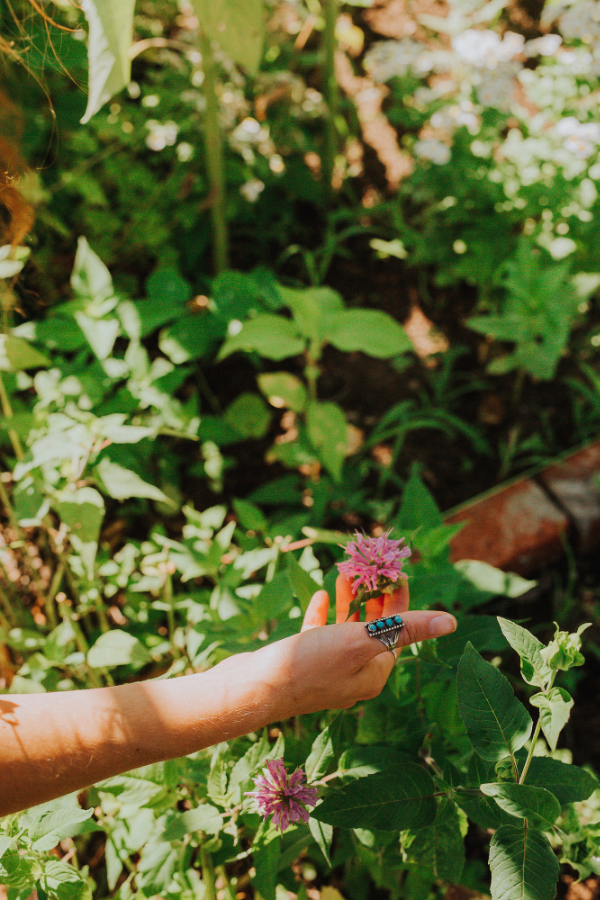If you were to look out the back window of my mother’s house you would see gardens that are endless, claiming territory as they edge into the grass and fade back into the forest. It’s unclear where her garden ends and the native wildflowers begin, particularly because of the native bee balm (botanical name Monarda) that grows in shocks of purple, pink, and lavender everywhere.
While bee balm flowers are spectacular with their fireworks of color, it’s the intoxicating fragrance and history as a medicinal flower that excite me most. I collect thee flowers all summer to throw into teas throughout the year.

red Monarda Didyma flowers
Many Indigenous Americans worked with Monarda to break fevers and aid digestion, and used the leaves externally as an antiseptic. The sharp and spicy flavor, oregano-like, indicate it has a high volatile oil content, making it naturally antimicrobial. It's potent and gentle and the flavor is delightful-- wonderful in tea hot or iced.

pink Monarda fistulosa

